Piezoelectric jetting technology has greatly improved efficiency and consistency in the manufacture of the complex products emerging from the microelectronics, medical, and automotive industries. The intersection of piezoelectric jetting technology with the modular, exchangeable dispense jet valve creates a whole new dynamic in manufacturing flexibility and versatility.
For many automated fluid dispensing processes, high-speed jetting technology is a new and innovative alternative to traditional, needle-based contact dispensing. Because high-speed jetting is non-contact (the jet valve never contacts the product or surface), it offers a higher degree of flexibility and can be used in a wider variety of applications that otherwise would require a costly Z-axis system with height-sensing and positioning functionality.
True high-speed jetting is made possible by piezoelectric technology by Nordson EFD, which enable this style of jet valves to dispense fluids at speeds at up to 500 Hz. Modular piezoelectric jet valves that can be configured for multiple uses combine the benefits of high-speed jetting, piezoelectric technology, and incredibile application flexibility making them a powerful alternative to traditional dispense valves, which are often limited to a single application capability.
Piezoelectric Technology Accelerates the Dispense Cycle
High-speed jet valves that incorporate piezoelectric technology can achieve extremely fast open-and-close cycles that eject, or “jet,” fluids onto a substrate. “Piezo” is a Greek term for “pressure.” When pressure is applied to certain crystalline materials, such as quartz, it creates voltage. Conversely, when voltage is applied to a crystal, the crystal changes its shape. In the case of piezoelectric jet valves, voltage is applied to a piezoelectric actuator inside the valve.

The piezoelectric actuator is composed of two stacks of ceramic disks (crystalline materials) that change shape as voltage is applied. This allows for more precise control of the vertical motion of the actuation needle and its attached ball. When the ball lifts off its ceramic seat, the resulting cavity fills with fluid. As the ball reseats, a fluid droplet ejects from the valve. With piezocontrolled jet valves, this ball-and-seat movement typically occurs in hundreds of microseconds – speeds that cannot be achieved using air- or springactuated valves.
Benefits of High-Speed Jetting
High-speed non-contact jetting offers several advantages over traditional contactbased dispensing in the following ways.
No Surface Contact
In contact dispensing applications, the tip of the dispensing needle needs to contact a product or surface upon each dispensing cycle. High-speed jetting eliminates this surface contact, thus allowing the dispensing of fluid into hard-toaccess areas, onto uneven or irregularly shaped surfaces (such as needles), or onto delicate substrates (such as wire bonds), where a dispensing needle cannot be used.
Eliminating needle contact also removes some of the drawbacks of contact dispensing, such as:
- previously applied fluids being dragged onto other parts of a substrate;
- the dispense gap variation caused by irregular surface heights that impede dot-to-dot transfer;
- the reliance on surface tension to pull fluid from a needle tip;
- the need for precise height adjustment (Z-axis motion);
- the need for the under-board support often required for printed circuit boards;
- (PCB), lead frames, and other electronic component dispensing applications.
Greater Pattern Capability
Jet valves can create patterns not possible with needle dispensing. These patterns include:
- jetting multiple shots in the same location to create larger dots;
- jetting adjacent dots provides the flexibility to create lines or complex shake;
- jet valves can jet fluids vertically, horizontally, or in an inverted orientation.
Small and Precise Deposits
The ability to deposit very small and precise amounts of fluid is an ever-increasing necessity for manufacturers of tiny micro-electronics and other minuscule parts.
Jet valves can dispense extremely accurate, extremely small amounts of fluid with the following characteristics:
- shot volumes as small as 0.5 nanoliters;
- dot diameters as small as 200 μm (0.008 in.);
- fluid streams as small as 75 μm (0.003 in.);
- fillet sizes as small as 300 μm (0.0118 in.); (a fillet is a fluid bead that is placed at the intersection of perpendicular lines).
Stable Performance and Robust Construction
Jet valves can produce accurate, highly repeatable shots with greater consistency than needle-based valves, primarily because of the reliable performance of the piezoelectric actuator, which is designed specifically for high-duty-cycle use. The piezoelectric actuators in the xMOD valve are capable of maintaining consistent performance for billions of cycles.
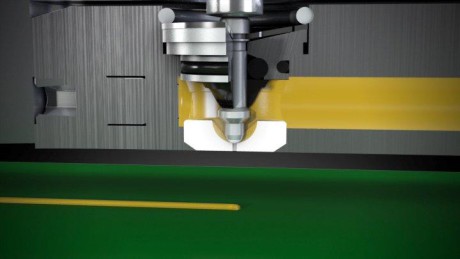
Piezo jet valves are also robustly constructed, with smaller wetted paths and fewer moving parts, which translates to less fluid waste, fewer breakdowns, and fewer consumables. Because jet valves do not use a needle, needle tip wear and needle cleaning are eliminated, resulting in less downtime for service or maintenance.
Extreme Speed and Very Short Dispense Times
Piezoelectric actuators, in addition to making jet valves robust, also make them extremely fast. Jet valves can operate at speeds up to 500 Hz. This allows a high-speed jetting system to provide a minimum dose (or dispense) time of 140 microseconds, adjustable in 10 microsecond increments.
Cost Savings
Jet systems do not need a Z-axis motion device equipped with height- and position-sensing devices. Other dispensing systems must be properly installed, programmed, and maintained by trained personnel. Eliminating the Z-axis motion device with a jet system reduces setup cost and time and removes the need for specialized operator training. (fig.9)
Modular, Exchangeable Jet Valves Increase Application Versatility
If you are considering jetting technology for an application but still need the ability to apply needle-based patterns or the flexibility to dispense a range of materials for different applications, look for systems that incorporate modular valves that can be configured for both.
Because modular jet valves can be configured for contact jetting or non-contact dispensing and also for heated or non-heated applications, a high-speed jetting system that uses modular jet valves provides the following additional advantages above and beyond those mentioned earlier.
Advantages
- The variety of fluids and fluid viscosities that can be dispensed is greatly increased. A modular jet valve system can apply a variety of fluids such as underfill epoxies, surface mount adhesives (SMAs), encapsulants, conformal coating, UV adhesives, and electrically conductive adhesives, as well as some filled materials.
- The variety of applications in which the system can be used is greatly increased. For example, the same production line that is used to apply adhesive to test strips could be quickly and easily reconfigured for a needle bonding application, in which speed and deposit spacing are critical. Because the substrate (the needle) is so small, jet valves are better for needle bonding than traditional needle-based valves because jet valves provide greater precision and control, smaller center-to-center spacing, and faster speeds.
- Modular valves allow the quick-change of wetted parts to fresh, clean components, allowing you to resume production more quickly and efficiently. This lowers your maintenance costs and reduces critical downtime.
- A mounted modular valve can be reconfigured without completely removing it from the production line, which is especially beneficial in contract and low volume/high-mix manufacturing, where application needs change frequently.
Characteristics
When choosing a modular jet valve, look for valves that offer the following characteristics:
- piezoelectric actuation of both the open- and close movement of the actuation needle;
- easy conversion from non-contact (jet-nozzle based) to contact (needlebased) usage by simply changing the valve seat;
- easy nozzle or needle change-out, allowing for a quick-change of orifice size in less than ten minutes;
- a variety of seal choices, thus increasing the types of fluids that can be applied (for example, some types of seals can be affected by certain types of fluids – the ability to choose between types of seals, such as FFKM vs. NBR, increases the types of fluids and fluid viscosities that can be applied);
- easy cleaning and easy part replacement without requiring the removal of the entire valve from the production line.
USES OF HIGH-SPEED JETTING TECHNOLOGY
Constant improvements and innovations in the micro-electronics industry continue to reduce the scale and increase the complexity of the components used in the manufacture of consumer electronics and other devices. Jetting technology is today’s method of choice for applying fluids to very small components or to delicate substrates at a very high rate of speed.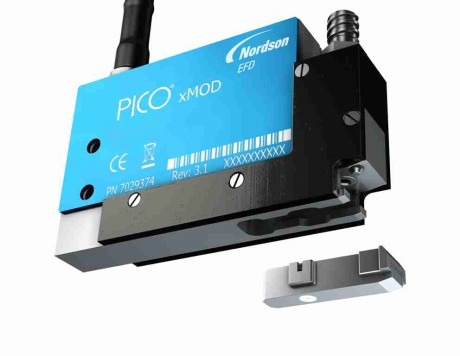
Jetting technology is ideal for the following applications:
- SMA applications, in which a surface mount adhesive (SMA) is applied to a PCB (or other assembly) after solder paste has been applied. Jetting works for SMA applications because a jet nozzle can build up a dot quickly by applying many shots in the same location, allowing SMA to be applied after solder paste without disturbing the paste.
- Corner bond attachment, in which an SMA is applied to the corner of ball grid array (BGA) attachment points on a PCB before the BGA is attached. The advantage of jetting for corner bond attachment is speed and the ability to deposit fluid right at the edge of the integrated circuit.
- Die stacking, or chip stacking, in which multiple chips are mounted on top of each other within a single semiconductor package. The benefit of jetting for this application is the ability to jet fluid into the side of a package that is already built up, allowing capillary action to pull the fluid into place between the stacked components without damaging the side contacts.
- Flip chip, in which underfilling is used to provide a stronger mechanical connection for semiconductor devices, such as IC chips or microelectromechanical systems (MEMS), that have been connected to external circuitry. The precise and highly repeatable deposit placamento provided by high-speed jetting is advantageous for many MEMS and IC chip applications.
- IC encapsulation, in which UV-cure adhesives are used to encapsulate components on a flexible or rigid board surface. Encapsulation endows the board surface with the strength and stability needed for changing environmental conditions. Jetting is ideal for IC encapsulation.
- Lubricating syringe and endoscope interiors, bonding lenses with optical silicone adhesives, bonding needles with UV adhesives, and dispensino proteins onto a product. Jetting is an excellent solution for these applications where speed and deposit size are critical.
- Dispensing bio-materials onto insulin/blood sugar test strips or veterinarian test strips, or applying reagents to test strips. The benefits of jetting for applying materials to test strips include high speed, repeatability, and accuracy. Jetting also aids in maintaining contaminate free conditions and prevents cross-contamination because there is no contact with the application surface.
SEE ALSO THE VIDEO: https://www.youtube.com/watch?v=rBUDlmcerVY&index=1&list=PLD6A5779A49F73538

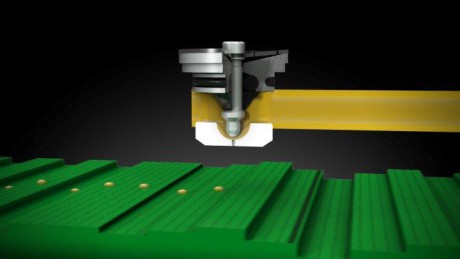
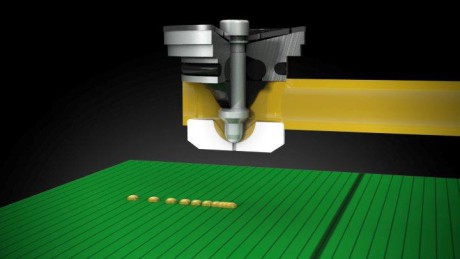
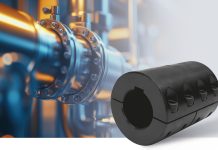
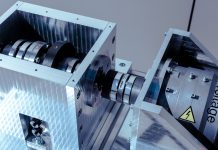
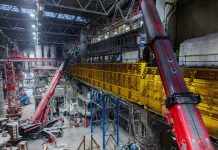
Looking for a dot on cloth/Matt with washing out marking ink.
It will be mounted on a X Y plotter for quilting company. Cost is also a factor.
Please send specs ,cost ,application examples,
Send info to “319 Blake st. Helena Montana 59601.
Also if you know any else a spitting drop head devise, we would be thankful.
Steve X Y Z CnC.
Dear Steve,
for more information about NORDSON High Speed Piezoelectric Jet Valves Technology, you can directly contact
Mrs. NICOLETTA SALA, to the following address: nsala@nordsonefd.com.
Kind regards
Anna Bonanomi
editor